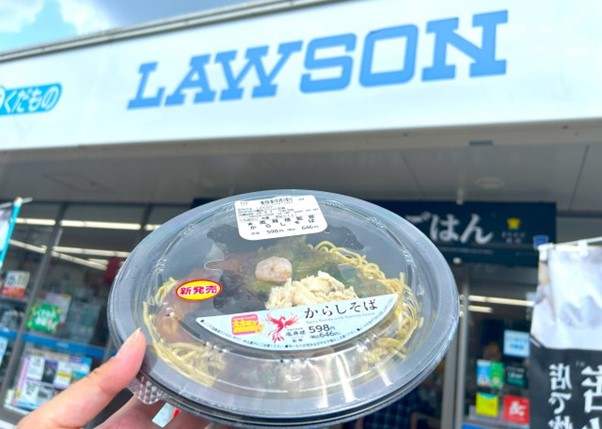
Restaurant quality food from a convenience store.
Kyoto is home to many famous foods, such as yatsuhashi, a traditional Japanese sweet, and restaurants, like the omurice eatery Kichi Kichi. However, not many people would think to associate Kyoto with Chinese food.
Among the many offerings that the city’s popular Chinese restaurants offer, one of the most iconic dishes would be karashi soba. Karashi is a type of mustard that is commonly used in Japanese cuisine, typically spicier than the usual Western mustard, and it’s mixed into the noodles before being topped with sauce and other tasty ingredients.
Our Japanese-language reporter K. Masami has, in recent times, started a hobby of trying out different karashi sobas whenever she finds herself in Kyoto. She’s even attempted making it herself. She was satisfied overall with how the noodles turned out, though it just couldn’t match what the restaurants were offering. For top-quality karashi soba, a trip to Kyoto was the only option—until she discovered that Lawson had recently started selling it.
Upon searching the shelves at Lawson, she soon found what she was looking for, and it came with a price tag of 646 yen (US$4.51). Lawson has consulted with one of Kyoto’s most popular Chinese restaurants, Homairo, to produce this addition to its product line-up.
Homairo often draws a large crowd of customers, not just for its karashi soba but for the rest of its menu too. The store has recently moved to a new location and our reporter had just visited there only a short time ago, noting the improved location and ambience.
▼ Karashi soba served at Homairo
Each restaurant’s version of the dish is a little different, and Homairo’s can be likened to the taste you would experience at a high-class hotel. With this in mind, despite her high hopes for Lawson’s product, she couldn’t help but feel that they would have to make certain accommodations in order to cater to the taste buds of the majority. So, just how much did they have to reduce the heat of Homairo’s distinctive spiciness?
Not a lot, it turns out. It’s probably not recommended for people who can’t tolerate spice at all, or children, since it is sufficiently spicy. Looking closer at the ingredients, there was lettuce, shrimp, wood ear mushrooms and steamed chicken, much like you would find in the store itself. Although the amount was a little less than she was used to, the cheaper price more than compensated for that.
The noodles were perhaps less firm than she would have liked but they were within a good range for a convenience store product, and, when lifted, they brought with them the sauce, leading to a taste and texture extremely similar to Homairo’s.
There were still indications that the flavor was stronger than the original restaurant’s, possibly due to the amount of sauce, and that it was in fact food from a convenience store. However, it still had enough of the original Homairo flavor that she found it extremely satisfying.
As Lawson is only selling this in the Kinki region (Kyoto, Osaka, Nara, Hyogo, Wakayama and Shiga prefectures), you’ll need to be in the area or head over there if you want to taste it. And, since you’re there, maybe try out the original version from Homairo as well.
Photos ©SoraNews24
● Want to hear about SoraNews24’s latest articles as soon as they’re published? Follow us on Facebook and Twitter!
[ Read in Japanese ]

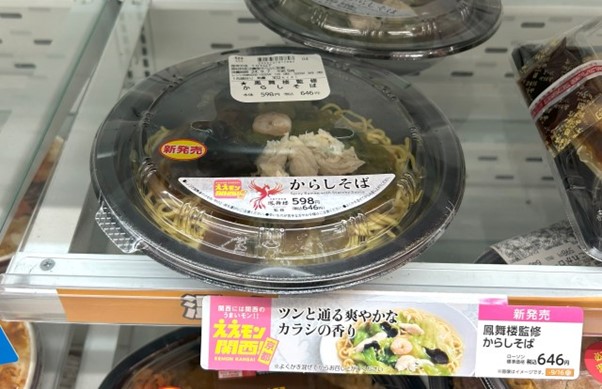
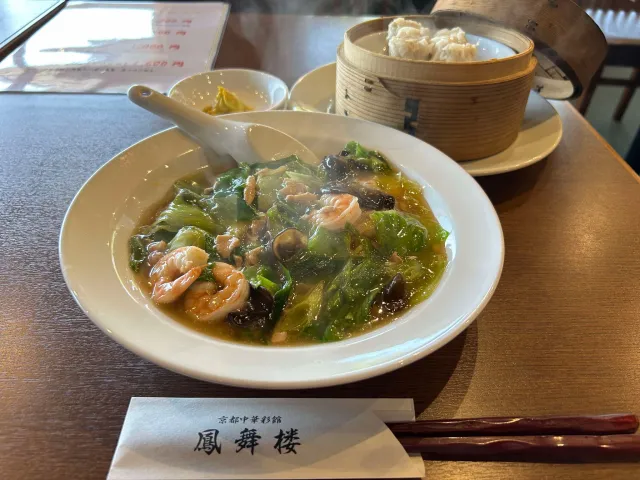
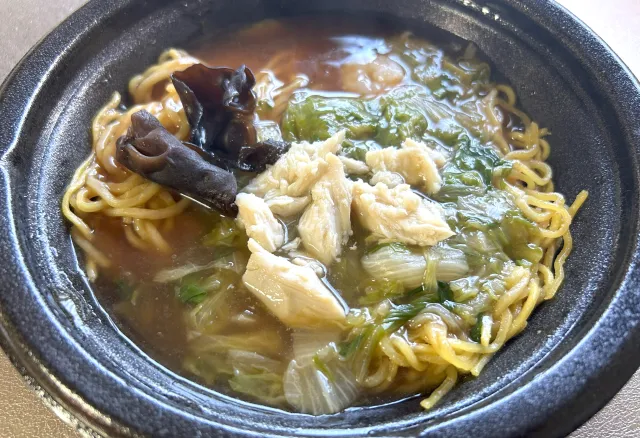
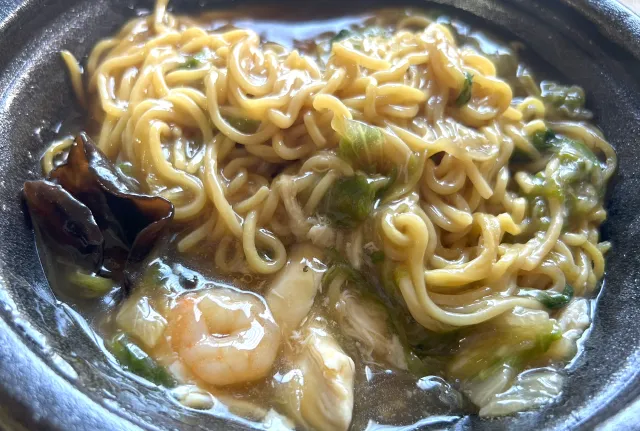
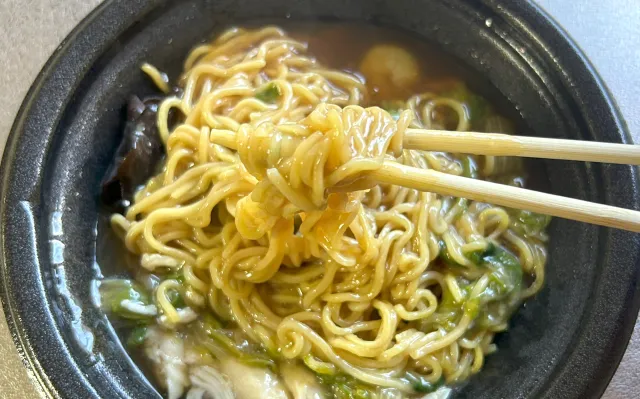
 Let’s try making the Kyoto-style Chinese dish mustard soba【SoraKitchen】
Let’s try making the Kyoto-style Chinese dish mustard soba【SoraKitchen】 We eat Kyoto’s best-loved noodle dish at the restaurant that invented it
We eat Kyoto’s best-loved noodle dish at the restaurant that invented it Eating every kind of cold noodle dish from Family Mart to stave off the summer heat【Taste test】
Eating every kind of cold noodle dish from Family Mart to stave off the summer heat【Taste test】 Lawson convenience stores team up with Tenkaippin ramen chain for new cold ramen in Japan
Lawson convenience stores team up with Tenkaippin ramen chain for new cold ramen in Japan Which noodles, other than Okinawa soba, pair best with Okinawa soba broth?【Taste Test】
Which noodles, other than Okinawa soba, pair best with Okinawa soba broth?【Taste Test】 Starbucks Japan releases new drinkware and goods for Valentine’s Day
Starbucks Japan releases new drinkware and goods for Valentine’s Day Japan’s kid-friendly ski program is now selling Pikachu snowboards for a limited time only
Japan’s kid-friendly ski program is now selling Pikachu snowboards for a limited time only Totoro cream puffs and Catbus cookies are finally available in downtown Tokyo
Totoro cream puffs and Catbus cookies are finally available in downtown Tokyo Japan’s foreign tourist numbers projected to fall for first time in years in 2026
Japan’s foreign tourist numbers projected to fall for first time in years in 2026 We try an unusual buffet of dishes made from wild game at a roadside stop in Chiba
We try an unusual buffet of dishes made from wild game at a roadside stop in Chiba Giant hotel rooms in Osaka reflect the new non-niche face of travel in Japan.
Giant hotel rooms in Osaka reflect the new non-niche face of travel in Japan. Mister Donut and Godiva continue their sweet sweets relationship with new treats on sale now in Japan
Mister Donut and Godiva continue their sweet sweets relationship with new treats on sale now in Japan Starbucks Japan unveils new Christmas Frappuccino and holiday drinks for 2025
Starbucks Japan unveils new Christmas Frappuccino and holiday drinks for 2025 Is this the most relaxing Starbucks in Japan?
Is this the most relaxing Starbucks in Japan? 7-Eleven Japan starts new temporary luggage storage service in over 300 branches
7-Eleven Japan starts new temporary luggage storage service in over 300 branches 10 times to avoid traveling in Japan in 2026
10 times to avoid traveling in Japan in 2026 Our 52-year-old pole dancing reporter shares his tips for achieving your New Year’s exercise goal
Our 52-year-old pole dancing reporter shares his tips for achieving your New Year’s exercise goal Starbucks Japan releases new Frappuccino and latte for Valentine’s Day
Starbucks Japan releases new Frappuccino and latte for Valentine’s Day Ramen restaurant’s English menu prices are nearly double its Japanese ones, denies discriminating
Ramen restaurant’s English menu prices are nearly double its Japanese ones, denies discriminating Princess Mononoke magnets return just in time to treat yourself to awesome anime decorations
Princess Mononoke magnets return just in time to treat yourself to awesome anime decorations Umamusume anime girl plushie recalled for having parts she absolutely should not have【Pics】
Umamusume anime girl plushie recalled for having parts she absolutely should not have【Pics】 Japanese women showing rebounding interest in giving Valentine’s Day chocolate【Survey】
Japanese women showing rebounding interest in giving Valentine’s Day chocolate【Survey】 We ate sushi made from Japan’s most expensive tuna ever【Taste test】
We ate sushi made from Japan’s most expensive tuna ever【Taste test】 Starbucks Japan ready to get Year of the Horse started with adorable drinkware and plushies【Pics】
Starbucks Japan ready to get Year of the Horse started with adorable drinkware and plushies【Pics】 Disillusionment at Tsukiji’s tourist-target prices led us to a great ramen restaurant in Tokyo
Disillusionment at Tsukiji’s tourist-target prices led us to a great ramen restaurant in Tokyo Starbucks teams up with 166-year-old Kyoto doll maker for Year of the Horse decorations【Photos】
Starbucks teams up with 166-year-old Kyoto doll maker for Year of the Horse decorations【Photos】 Tokyo’s Tsukiji sushi neighborhood asks tour groups to stay away for the rest of the month
Tokyo’s Tsukiji sushi neighborhood asks tour groups to stay away for the rest of the month Survey asks foreign tourists what bothered them in Japan, more than half gave same answer
Survey asks foreign tourists what bothered them in Japan, more than half gave same answer Japan’s human washing machines will go on sale to general public, demos to be held in Tokyo
Japan’s human washing machines will go on sale to general public, demos to be held in Tokyo We deeply regret going into this tunnel on our walk in the mountains of Japan
We deeply regret going into this tunnel on our walk in the mountains of Japan Studio Ghibli releases Kodama forest spirits from Princess Mononoke to light up your home
Studio Ghibli releases Kodama forest spirits from Princess Mononoke to light up your home Major Japanese hotel chain says reservations via overseas booking sites may not be valid
Major Japanese hotel chain says reservations via overseas booking sites may not be valid Put sesame oil in your coffee? Japanese maker says it’s the best way to start your day【Taste test】
Put sesame oil in your coffee? Japanese maker says it’s the best way to start your day【Taste test】 No more using real katana for tourism activities, Japan’s National Police Agency says
No more using real katana for tourism activities, Japan’s National Police Agency says Starbucks Japan reveals new sakura drinkware collection, inspired by evening cherry blossoms
Starbucks Japan reveals new sakura drinkware collection, inspired by evening cherry blossoms Updated cherry blossom forecast shows extra-long sakura season for Japan this year
Updated cherry blossom forecast shows extra-long sakura season for Japan this year All aboard the train station soba restaurant that’s being called the best in Japan
All aboard the train station soba restaurant that’s being called the best in Japan Turn around, and you’ll see this Tokyo convenience store is also something else【Taste test】
Turn around, and you’ll see this Tokyo convenience store is also something else【Taste test】 We visit a Lawson in Indonesia to see if it can satisfy our cravings for Japanese snacks
We visit a Lawson in Indonesia to see if it can satisfy our cravings for Japanese snacks We ate all eight kinds of cold noodles from 7-Eleven and here’s our favourites【Taste test】
We ate all eight kinds of cold noodles from 7-Eleven and here’s our favourites【Taste test】 Japan Super Budget Dining – What’s the best way to spend 1,000 yen at Lawson?
Japan Super Budget Dining – What’s the best way to spend 1,000 yen at Lawson? New form of luxurious poverty arrives at Japanese convenience stores with Tenkasu Gohan
New form of luxurious poverty arrives at Japanese convenience stores with Tenkasu Gohan Japanese ramen chain elevates convenience store food with new microwaveable noodles【Taste test】
Japanese ramen chain elevates convenience store food with new microwaveable noodles【Taste test】
Leave a Reply